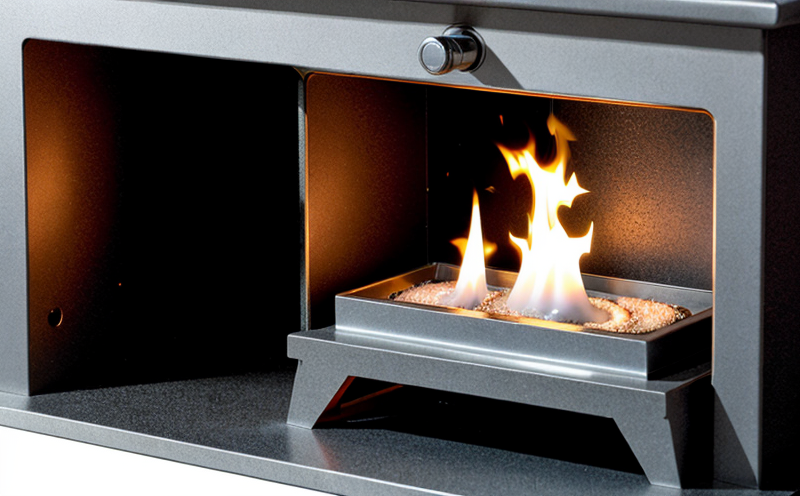Surface Flame Spread Testing of Doors and Partitions
The testing of doors and partitions for surface flame spread is a critical component in ensuring fire safety compliance. This testing evaluates how materials behave when exposed to fire, specifically focusing on the rate at which flames spread across the material's surface. Understanding this behavior is vital for constructing safer buildings that can withstand potential fire hazards effectively.
The process of testing involves subjecting samples under controlled conditions to observe and measure their reaction to an open flame. The primary outcome measures include the time taken for a flame to ignite, its rate of spread over the material's surface, and the ultimate flame spread index (FSI). This information is essential in determining whether materials meet regulatory standards set by various international bodies.
For doors and partitions specifically, this testing ensures that these crucial structural elements do not become conduits for fire propagation. Properly tested doors and partitions can help contain fires within a room or area, thereby protecting adjacent spaces from the same threat. This is particularly important in densely populated areas such as commercial buildings, residential complexes, and public infrastructure.
Compliance with specific standards like ASTM E84-21a, ISO 6702:2015, and EN 338 ensures that the tested materials are suitable for their intended use. These standards provide a framework for consistent testing procedures, making it easier to compare results across different laboratories.
Surface flame spread testing typically involves preparing samples according to specified dimensions. The specimens are then subjected to a standard fire source at controlled environmental conditions. Observations and measurements made during this process form the basis of compliance decisions.
The importance of accurate and reliable testing cannot be overstated, especially when it comes to materials that form part of critical safety infrastructure like doors and partitions. By adhering strictly to established protocols, laboratories can provide clients with confidence in their products' performance under fire conditions. This knowledge is vital for architects, engineers, and building owners looking to enhance the overall safety profile of structures.
Scope and Methodology
| Test Specimen | Standard dimensions as per relevant standards (typically 100 mm x 300 mm or similar) |
|---|---|
| Fire Source | Open flame, typically using a propane gas burner |
| Environmental Conditions | Controlled temperature and humidity levels |
| Data Collection | Flame spread distance, time to ignition, after flame time, and visual observations |
The testing procedure begins by preparing the specimen according to predetermined dimensions. Once prepared, the sample is exposed to an open flame for a set duration while being observed closely. The fire source is maintained at a constant height above the sample throughout the test.
Data collection involves measuring and recording various parameters such as the distance over which flames spread across the surface of the material, the time it takes for flames to ignite, and how long they continue burning after removal from the flame source. Visual observations also play an important role in assessing the overall behavior of the sample during testing.
The data collected is then analyzed using standardized formulas provided by relevant standards. Results are compared against specified thresholds to determine compliance with regulatory requirements. Non-compliance may indicate a need for further investigation or modification before retesting."
Quality and Reliability Assurance
- Regular calibration of test equipment.
- Training of personnel in accordance with the latest procedures.
- Use of certified reference materials.
- Documentation and traceability of all testing activities.
To ensure consistent and reliable results, quality assurance measures are implemented at every stage of the testing process. Regular calibration of test equipment ensures that all instruments are operating within acceptable tolerances. This helps maintain accuracy and precision in data collection.
Personnel involved in conducting these tests undergo continuous training to stay updated with any changes or updates to testing protocols. Such education helps ensure that everyone follows best practices consistently, leading to more accurate results.
The use of certified reference materials allows for cross-checking between different laboratories. This not only enhances the credibility of test results but also facilitates better collaboration among professionals working in this field."
International Acceptance and Recognition
The surface flame spread testing method is widely recognized across many countries around the world due to its robustness and reliability. Standards such as ASTM E84-21a, ISO 6702:2015, and EN 338 have been adopted by numerous nations as benchmarks for material flammability performance.
These internationally accepted standards ensure that doors and partitions meet strict fire safety criteria regardless of where they are manufactured or installed. This uniformity promotes better communication between stakeholders involved in construction projects globally."





